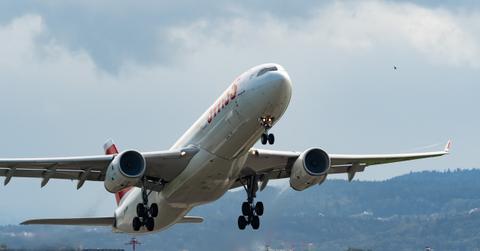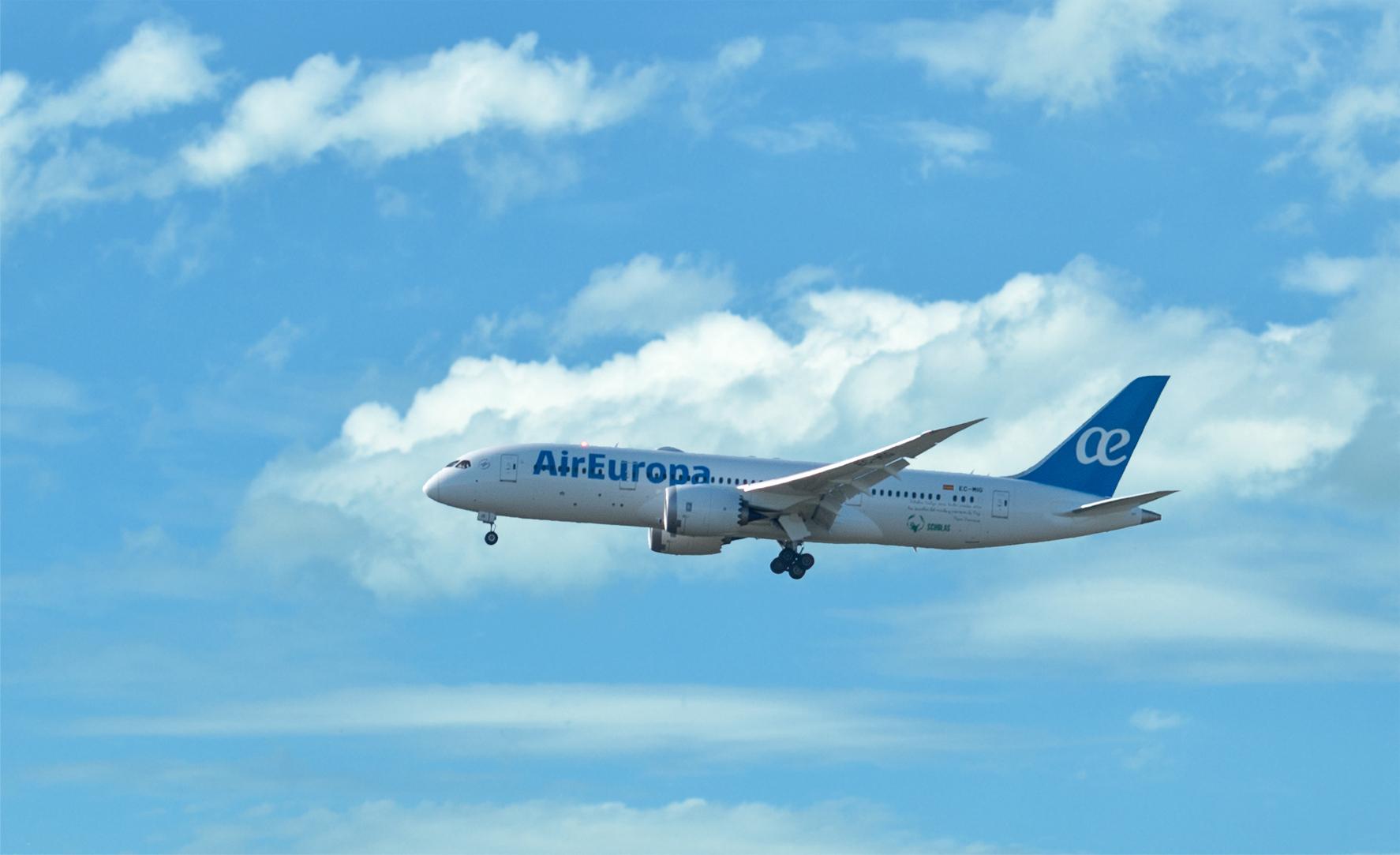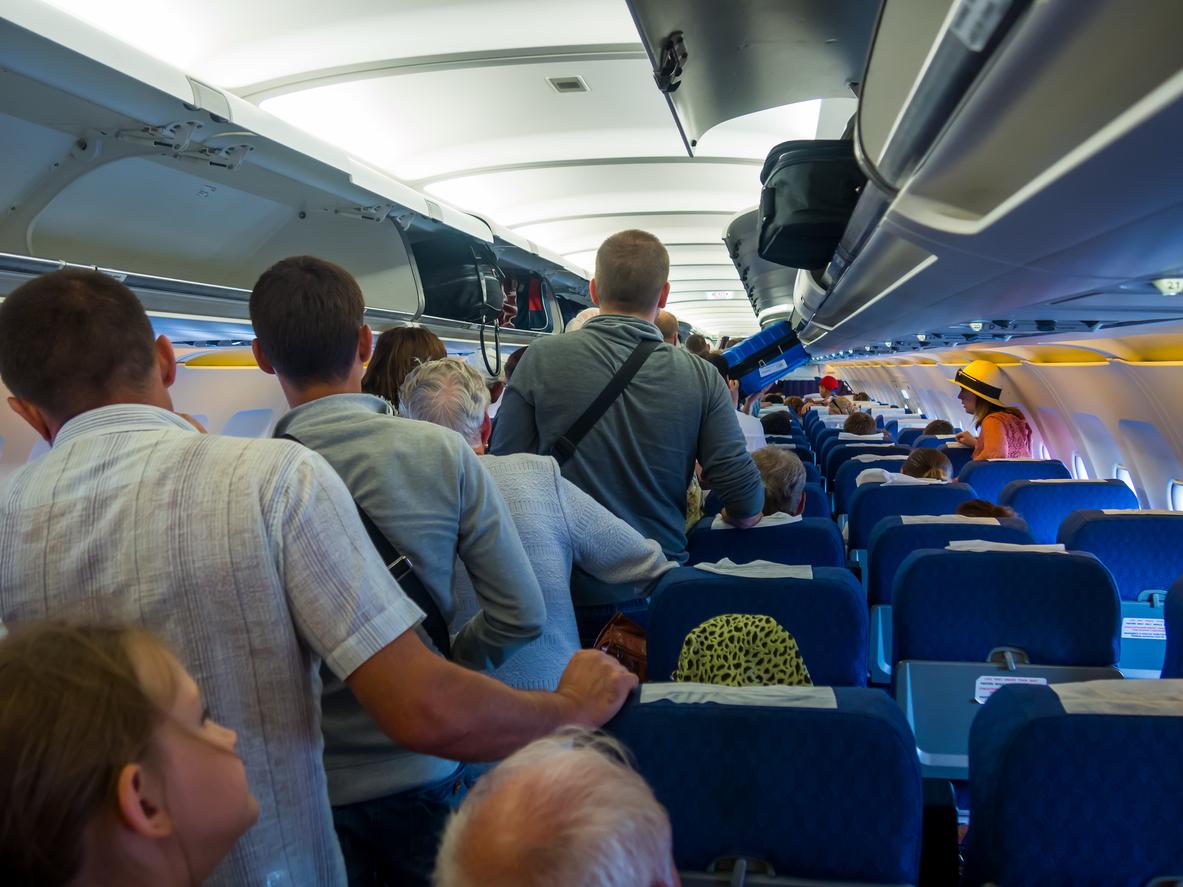Turbulence Is Getting Worse on Planes — Here’s Why
Updated April 25 2023, 12:18 p.m. ET

Turbulence isn’t anything new. In fact, it’s a relatively common experience that most people have come to expect when flying. But how do you know what’s considered normal?
In the last few months, frequent flyers might’ve noticed that their flights are unusually bumpy. They’re not wrong, either — it’s actually true that turbulence is getting worse.
Why is turbulence getting worse?

In recent months, you might have seen some stories in the news about people enduring worse-than-usual turbulence on airplanes. Well, this increasingly common experience could be due to climate change, according to NPR.
The connection between turbulence and climate change might not be abundantly clear right away, but once the link is explained, it makes a lot of sense. There’s numerous types of turbulence, but one type in particular is causing trouble: clear air turbulence.
This kind is especially unpredictable due to the fact that it occurs when the sky is clear and no bad weather is present. It’s caused by an abrupt change in wind speed and direction, known as wind shear.
Researchers from the University of Reading in England say that increased wind shear in the jet stream is leading to more clear air turbulence. And since 1979, wind shear has risen by 15 percent, according to the study published in Nature.
How is climate change involved? Well, rising temperatures from emissions have a large impact on the jet stream, which leads to an increase in wind shear, resulting in more clear air turbulence.
In a follow up study published by the American Geophysical Union (AGU), researchers found that clear air turbulence is expected to double in some locations based on climate models. Recently, we’ve seen how severe the impacts of turbulence can be, which is why professionals in the field are working on ways to alleviate these effects.
Many are trying to figure out how to make turbulence less severe.

Harsh turbulence can seriously injure passengers — it’s not always just a slightly uncomfortable incident. There’s been a few suggested solutions, but determining how to navigate something you can’t even see is bound to come with some challenges.
One suggestion is to avoid the main jet streams. Often, these stronger jet streams are used to make things more convenient for passengers and workers alike — they tend to “increase speed and shorten flight times,” according to NPR. If these were avoided, it could help decrease clear air turbulence.
Even though a change could result in a slightly better flying experience, it wouldn’t be worth the consequences. Avoiding this route would likely increase emissions since longer flights would result in more fuel is being burned — this is the exact opposite of what we need.
Instead of changing paths, technology is often used to monitor turbulence.
A lot of airplanes use Sky Path, an app that keeps an eye on turbulence and provides real time reports. There’s also active flight controls, which helps to minimize shaking. These tools allow both pilots and passengers to feel more prepared and safe.
For now, the best thing we can do is to use all available tools to our advantage, keep researching better safety methods, and wear a seatbelt.